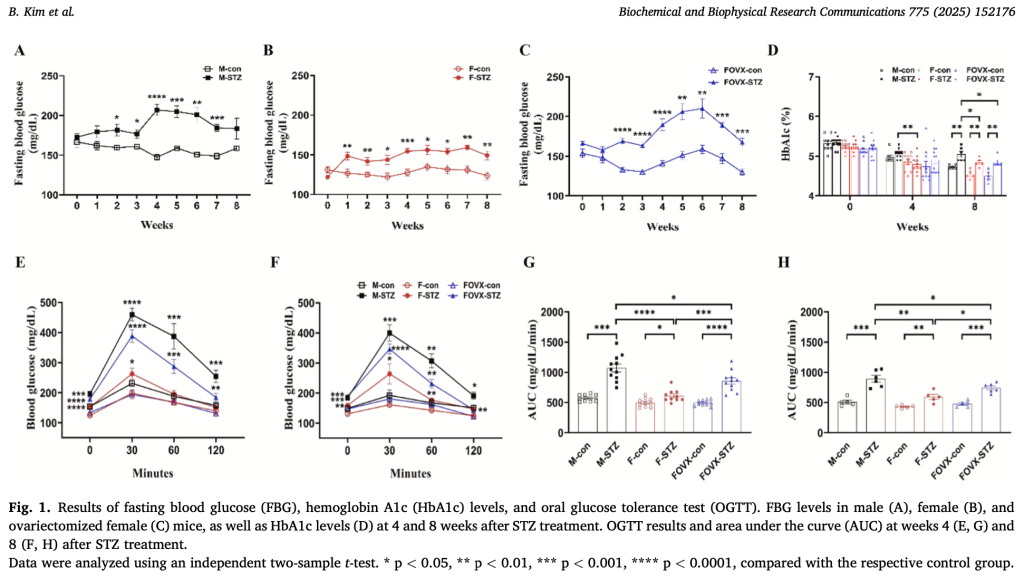Can Sex Difference shape glucose regulation?
by Shayla Sharmine
This week’s journal club focuses on a study from Biochemical and Biophysical Research Communications (2025) exploring the protective role of estrogen in glucose regulation. To explore the impact of sex difference, Kim. et al. used streptozotocin (STZ)-induced diabetic mice separated into males, intact females, and ovariectomized females. Physiological and metabolic responses were measured using fasting blood glucose, Hemoglobin A1c (HbA1c), and oral glucose tolerance test. Pancreatic beta cell integrity and functionality were analyzed by HOMA2 assessment, plasma insulin level, H&E staining, and Immunofluorescence staining of the significant endocrine population. Molecular investigation includes microarray-based transcriptomics analysis of the liver, a key metabolic organ.
The results show that male (M-STZ) and ovariectomized female (FOVX-STZ) mice exhibited more severe hyperglycemia, higher HbA1c levels, and poorer glucose tolerance than intact female mice (F-STZ) despite equivalent STZ exposure. Insulin resistance and β cell dysfunction were significantly more pronounced in males and estrogen-deficient females. Histological analysis revealed more severe islet atrophy and disrupted hormone balance (increased glucagon/insulin ratio and somatostatin levels) in the M-STZ and FOVX-STZ groups. At the same time, intact females retained healthier islet architecture and β cell mass. UCN3 expression was better preserved in F-STZ mice, and TUNEL assays showed less β-cell apoptosis compared to males and ovariectomized counterparts, suggesting a protective effect of estrogen.
Microarray analysis revealed distinct patterns of hepatic gene expression across the groups. F-STZ mice exhibited gene regulation associated with improved insulin signaling, reduced gluconeogenesis, and enhanced lipid metabolism, as indicated by the expression of genes such as G6pc, Ppargc1a, Fasn, and Srebf1, which are indicative of metabolic adaptations that support better glycemic control. In contrast, males and FOVX females exhibited dysregulation in stress and apoptotic pathways, including mTOR, FoxO, and p53, as identified in pathway enrichment analysis, which may contribute to progressive β-cell failure.
Together with these observations, this study concluded that STZ-induced diabetes includes significant sex-specific metabolic and molecular differences suggestive of estrogen being a key regulator in maintaining beta cell functionality and glucose homeostasis. This makes estrogen a possible therapeutic target to improve diabetic conditions, as the study emphasized, particularly in postmenopausal women with declining estrogen levels.

Continue your reading here:
Kim, B., et al. (2025). “Sex-specific differences in glucose metabolism and pancreatic function in streptozotocin-induced diabetic mice: The protective role of estrogen.” Biochem Biophys Res Commun 775: 152176. https://doi.org/10.1016/j.bbrc.2025.152176
